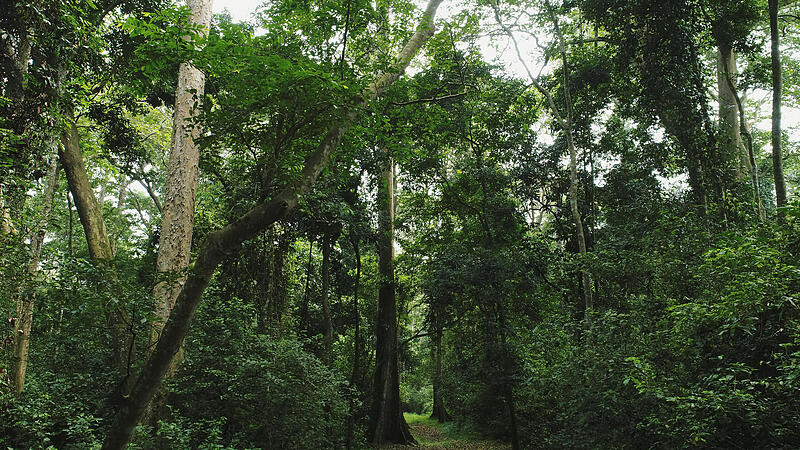Image: REUTERS
According to the experts, endemics, i.e. those animals that only occur in Carinthia, are particularly at risk. But the loss of biodiversity is also a growing problem on a global scale. A million species could disappear from the earth in the next few decades. “78 authors worked on the book with over 1,000 pages for three years,” says Christian Komposch from Ökoteam, the Institute for Animal Ecology and Natural Regional Planning, which coordinated the work on the Red List of endangered animal species in Carinthia. A work like this is only possible if scientists have previously worked intensively on the subject for decades, says Komposch, explaining the complexity of its creation. A total of 8,468 animal species were listed, 4,179 of which are considered species with an increased risk of extinction. Four percent of them are vertebrates, the rest are molluscs, arachnids, crustaceans or insects. “Most animals are ignored. We have absolutely no idea of what lives around us,” says biologist Komposch.
83 percent of animal species in Austria in poor condition
Even if these animals are very small, each one has its own task on this planet. This also applies to the approximately 45,000 species of spiders, because if they didn’t exist, we would be annoyed by countless insects. These little animals, which are less loved by many people, eat 400 to 800 million tons of prey around the world every year, as Martin Nyffeler from the University of Basel and his colleague Klaus Birkhofer from the University of Gießen found out. For comparison, the global annual human meat consumption is around 400 million tons.
Of course, species extinction is not just limited to Carinthia. According to a report by the European Environment Agency (EEA), 83 percent of the species and 79 percent of the habitats in Austria are in poor to poor condition. Intact ecosystems would be important allies in overcoming the climate crisis. “An ecosystem is resilient when it can act on as broad a basis as possible. A healthy ecosystem is based on the fact that we have an abundance of species. The thinner the basis becomes, the more unstable the system becomes,” explains Komposch, explaining the situation : “At some point this system will tip over, it’s like the game Jenga. I can’t catch it when it’s tilting, but only then do we begin to understand what’s going on. That’s why the Red Lists are important to raise awareness of the seriousness of the able to create.”
This is also the subject of the special exhibition on the extinction of species, which can be seen in the state museum in Klagenfurt until October and in which the state’s nature conservation department also worked. Werner Petutschnig from the Environment, Energy and Nature Conservation Department emphasizes the importance of endemics. These are 369 animal species that only occur in Carinthia worldwide. The folded door snail, for example, only occurs on the Koralm, as do many other ground beetle and spider species. The Koralm is a hotspot for endemics, which, according to his colleague Komposch, casts a critical light on the construction of wind turbines in this area.
Plants in summit regions are also endangered
The situation also looks serious worldwide. The World Biodiversity Council IPBES published a report in May 2019 according to which around one million animal, plant, fungal and other species could become extinct within the next few decades. Michael Kiehn, tropical biologist at the University of Vienna, is critical of this increase in the extinction rate. “It is true that extinction is a normal phenomenon of evolution, because without extinction the earth would be overpopulated with species,” Kiehn clarifies, adding: “But the speed at which this is now happening is endangering a great many species.” As an example, Kiehn cites plant species that have established themselves in the mountains around the summit regions. With rising temperatures, plants from lower-lying regions migrate upwards and displace those that have been established, but which in turn can no longer migrate upwards and thus disappear. But not only global warming, but also many other human activities, such as the sealing of areas or monotonous agriculture and forestry, endanger biodiversity.
Due to the change in habitats, many areas through which plants or animals can avoid are disappearing. But there are ways to limit the thinning of these retreats. Kiehn recommends restoring areas and creating corridors that these species can use for migration or as temporary habitat. The Federal Research Center for Forests, for example, is also working on this. In the Stepping Stone Biotopes project, small areas belonging to private forest owners are being put out of use to help connect isolated habitats.
“It starts in your own garden”
But it doesn’t always have to be an entire forest. “Everyone can do something,” Petutschnig is certain. “It starts in your own garden. With little effort, you can provide habitat for a huge number of animals here.” The wide range of possibilities begins with letting the lawn grow. When choosing shrubs, preference should be given to native trees and as many different ones as possible. “The thuja hedge does nothing for biodiversity,” says the biologist, who has a pond in his garden in which two different newt species live. Kiehn is also convinced of the many opportunities to implement positive things: “Everything we can do to improve the habitat of individual species makes sense, regardless of whether we can do it globally,” says the tropical biologist, who is part of the association “Rainforest of the Austrians” for the protection of the rainforest in Costa Rica. Komposch also relies on the simple things that every garden owner can do: “Leave the overgrown corner or a dead tree, even if it’s only a few square meters, that’s good.” In this way, awareness among the population would ultimately grow and ultimately also motivate politicians to take the right measures.
Source: Nachrichten




